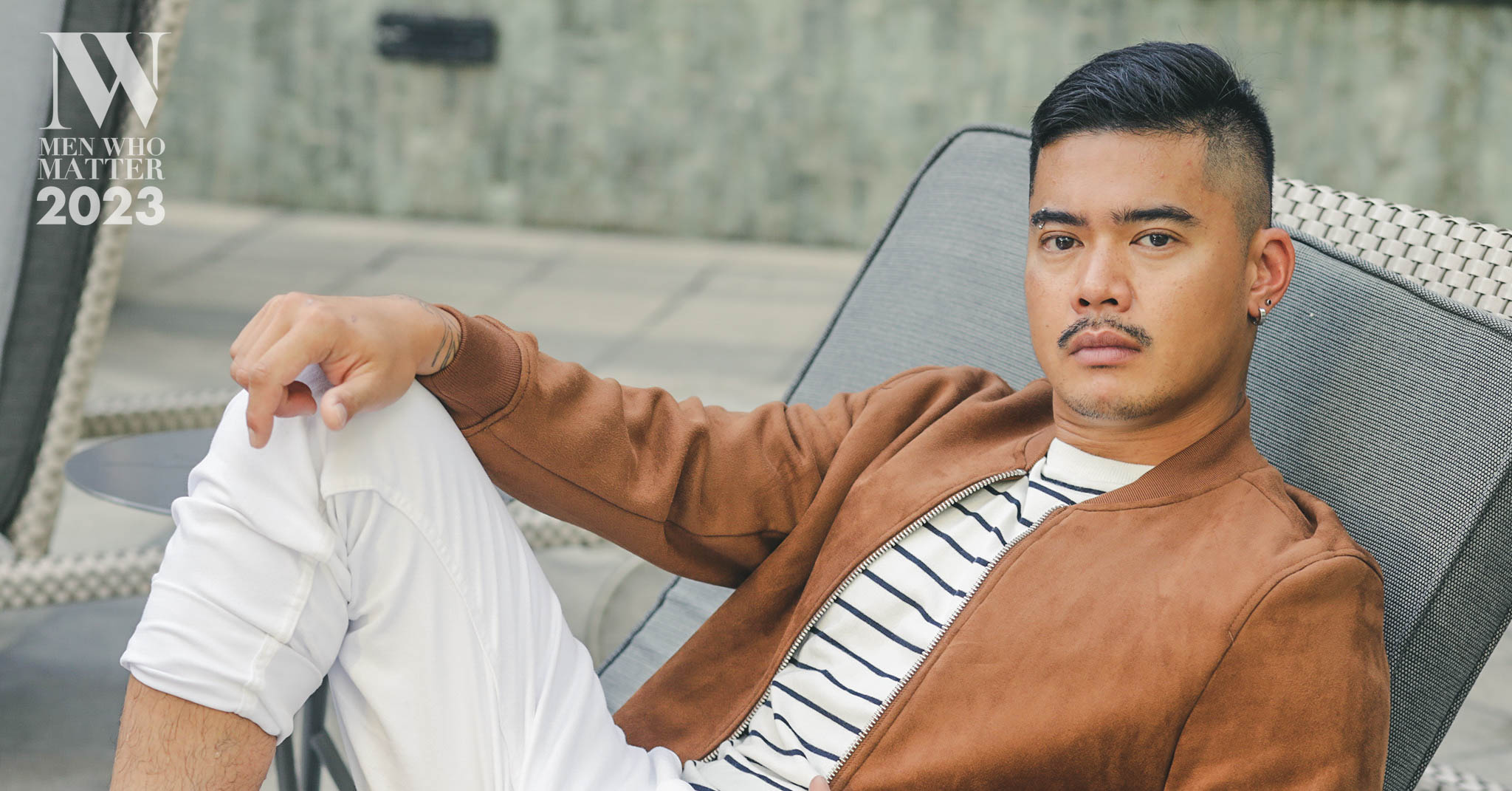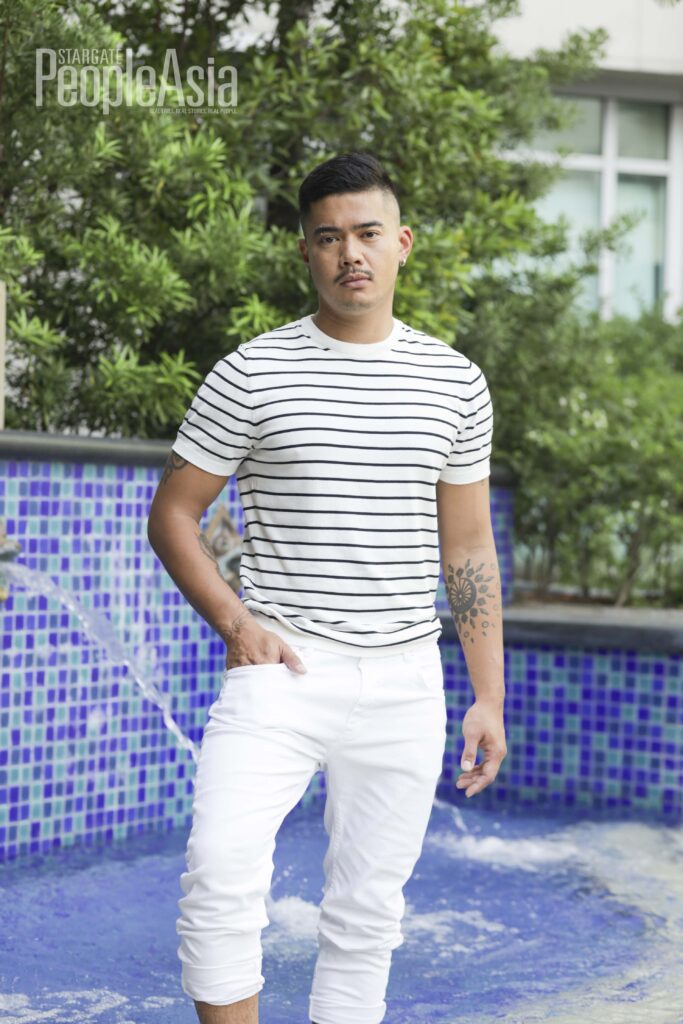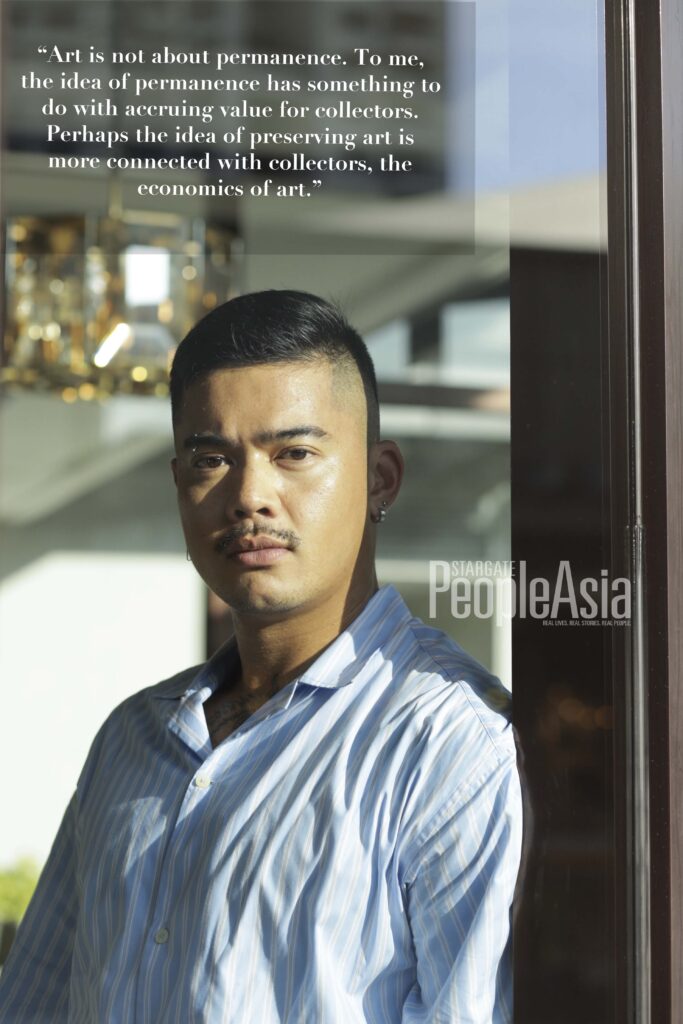Something futuristic, something from the past, something inspired by the supernatural — the ideas and influences this prolific multi-media artist explores and draws from always lead him to creatively give birth to something otherworldly and, well, New.
By FRANCINE Y. MEDINA
Photography by RXANDY CAPINPIN
Ars longa, vita brevis.
“Life is short, art is long.” Artist Leeroy New mulls over the words of Hippocrates.
“My works don’t necessarily have to be there forever, they can decay or be dismantled. But the memory of the work will linger.”
But ars (art) can also be the creative practice, which relates to the long and wild ride that New’s art journey has traversed — from his hometown in General Santos City to the world.
A giant serpentine creature known to eat the moon sisters rises in a Nevada desert. An alien alimasag (crab) hangs forebodingly from the ceiling of a museum in Austria. A sci-fi colony with vegetation lands on the grounds of a university in Quezon City. A large-scale, intricately woven bamboo installation seemingly creeps its way under an expressway in Toronto.
How could one miss the iconic shell-like sculpture in the lobby of Conrad Manila? And how could one not remember the sculptural black top and shorts Lady Gaga used on one of her album covers — a collaboration by New and designer Kermit Tesoro?
New is occupying the world, one installation at a time. He works swiftly with a full team in whichever part of the world he is invited to take up space.
Comeback
Last year was especially cathartic for him. After two years of “almost doing nothing,” as he says, he mounted nine projects in seven countries.
His most recent project is a massive installation at Toronto’s The Bentway, which is an expansive space underneath an expressway. New creates a giant supernatural creature from bamboo, and weaves and shapes it in a way that it latches on to the concrete sub-structures of the expressway.
He called it “Balete. Bulate. Bituka.” ‘Balete,’ is a native tree believed to be inhabited by
supernatural beings who may bring harm to mortals if they are not acknowledged and given respect. ‘Bulate’ means earthworm and ‘bituka’ means bowels.
The three words are put together with powerful connotations of mythology as a warning: The deep realities learned from exploring the bowels of our modern existence embodied by a vital creature of agriculture known to aerate the earth and bring a sense of hope for the future.
He’s the first Filipino artist to exhibit at the outdoor venue. And with such energy at that! At the opening last May 26, the Aliens of Manila (performance artists collaborating with New’s works) did spontaneous movements as though they’d been beamed down from New’s serpentine piece — ready to give off some extraterrestrial energy to The Bentway and its audience.
It’s a distinct Leeroy New practice. Always collaborative, like he’s building all these colonies honoring Mebuyan (a recurring muse in his works, Mebuyan is the Bagobo spirit world’s goddess of fertility and death) for a braver world where art provokes us to think about the future. What will happen to Earth and to us earthlings? How can we deal with the enemy — ourselves — producing all the massive trash and waste polluting the only world we call home?
Back to the future
“I’ve had good mentors, like Roberto Feleo, who was my high school teacher in Makiling (Philippine High School for the Arts); Alfredo Aquilizan, who became my teacher for one semester; and Gerry Leonardo, who taught a course on kinetic sculpture. Their works are different from mine but they had an impact on me as a student,” New says when asked his thoughts on receiving such accolades as being a recipient of one of the 2012 Cultural Center of the Philippines’ “Thirteen Artists Awards” and being a fellow in the Asian Cultural Council in New York in 2016. The most pivotal, perhaps, among these accolades was the 2009 Ateneo Art Awards, wherein he also snagged the La Trobe Residency Grant in Australia and the Artesan Gallery Residency Grant in Singapore.
New has also been nominated and has participated as set designer in award-winning films like Nervous Translation (2017) and Engkwentro (2009). He has also done work for theater.
A Fine Arts graduate of the University of the Philippines, New admits that he’s had his fair share of doing paintings, “I’ve done my time with paintings. But this is really what I’ve wanted to do all along. I’ve always wanted to translate my ideas into various mediums.”
And so, that is what New has been doing from the get-go. After a taste of being trained doing sculptural pieces, his real excitement is found in creating large-scale public art works.
Encouraged by his mother, he was involved in art at a young age and was joining art contests in General Santos City, where he was born and raised. Now 37, New recalls being a young boy from GenSan who had to live in a boarding school and study amid the forest-like environs of Mt. Makiling during his impressionable teenage years.
“It was, at first, a culture shock for me. Imagine, I came from a place where I was taught to just follow and then, there I was with other kids in this boarding school. We were given the space to explore and think about our vision, so that sense of adventure also became conducive to critical thinking,” he says.
“I was with other children, maybe 12- or 13-year-olds, from different backgrounds, with different talents, skills and art forms. Think of it as Lord of the Flies, but minus the chaotic ending and with good parental figures to guide us.”
On the other hand, he says, his studies in UP Diliman reinforced his skill, his views and concepts about art.
New’s large-scale sculptural works delve and uncannily mix the supernatural and transcendental with his fascination for science fiction.
Two of his epic works, mounted in 2021, honor Mebuyan: “Mebuyan’s Colony,” which he mounted in Ateneo and “Mebuyan’s Vessel” (2021) on the sands of La Union. Both resemble space ships made from discarded plastic materials, strips of bamboo and plants growing organically on them.
Mebuyan, he says, is his response to society’s patriarchal dominance and an acknowledgment of the strength and power of the feminine spirit.
“I like to explore and study things,” he continues. “The more I learn about our geo-political history, for instance, the more I feel that urge to put together mythology and science fiction in my works. I feel compelled to employ the stories that these mythological figures represented and place them in a modern-day context.
“Since I do large-scale works, I’ve also thought of doing my share in sustainability by committing myself to use discarded materials only. I don’t want to be known as the artist who contributed massively to the trash of this world.”
New is a very busy artist, with enough projects to keep him occupied perhaps in the next two years. Although he says he’s had some periods of struggle when he was younger, “I’ve had to figure things out on my own. I had to figure out a way to bring my vision into a reality and develop a new skill set as well.”
If anything, he says, his stint in doing production work for film and theater has helped him gain contacts for his team of artists and workers to help him execute his monumental pieces.
Boots Herrera, director and chief curator of Ateneo Art Gallery, where New has exhibited and received an award, says she has seen New from his early days working with his brother, Casey New, to the full-time team he brings with him everywhere.
“He’s really professionalized his art, which is a good thing,” says Herrera, “He’s organized and is able to accept invitations from all over the world to do his work.
“I’ve also seen how Leeroy’s works have evolved in structure and form. He is able to take advantage of whatever is there on site. His materials also change. In Taiwan, for instance, the used bottles gave his work a sense of place.
“You can really say that he has a vision of where he wants to take his craft next. His daringness has played a role in his development as an artist. And I think it’s his playfulness, his being experimental, his purposefulness that makes him stand out as an artist.”
New directions
New goes back to reflecting on the fleeting quality of his works. Soon, the alien-like bamboo vessels he has created in various spaces on the planet will eventually disintegrate. The recycled plastic bottles, PVC pipes and discarded objects will have to be dismantled for a new massive piece in another part of the world.
“Art is not about permanence. To me, the idea of permanence has something to do with accruing value for collectors. Perhaps the idea of preserving art is more connected with collectors, the economics of art,” he reflects. “This is why I’m drawn to my practice and why I’m drawn to conceptual art-making, including conceptual art performances. Art has expanded beyond the idea of collectability and accruing value.”
These days, New is preparing to set up his studio in La Union, closer to the sea — a theme that recurs in his works on sustainability and our changing earth. “I think my next step is to do architectural pieces where art and design can help a lot in creating more livable and kinder urban spaces. We need more spaces that are less inhuman, less harsher to exist in.”
The future is looking bright for Leeroy New, the alien of Manila who has long landed and placed his feet on the ground to create pockets of better worlds on this planet.
Styling and art direction by DEXTER FRANCIS DE VERA
Shot on location at ASCOTT MAKATI







